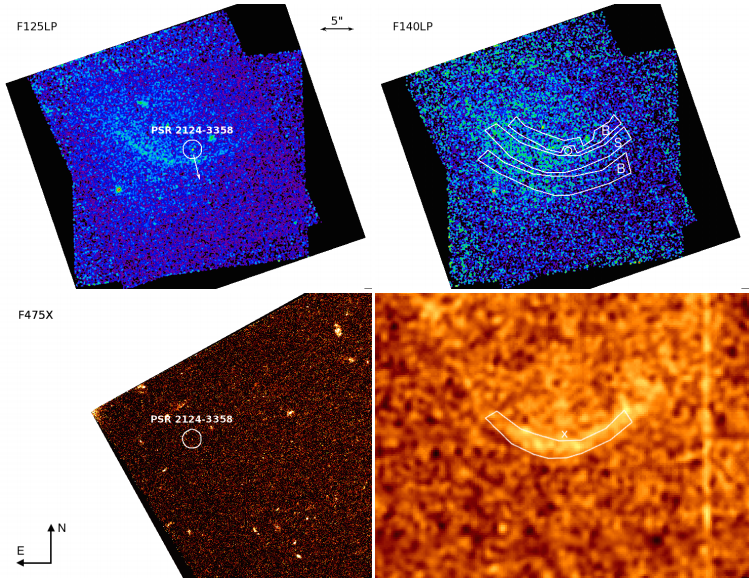A Too-Hot Pulsar Speeding Through the Galaxy
http://aasnova.org/2017/01/17/a-too-hot-pulsar-speeding-through-the-galaxy/
Hubble Space Telescope detection of the millisecond pulsar J2124–3358 and its far-ultraviolet bow shock nebula
Pulsars — the rapidly rotating, highly magnetized neutron stars that beam radiation from their magnetic axes — are as mysterious as they are exotic.
They’re most often observed at radio frequencies using single-dish telescopes, and they’re sometimes glimpsed in X-ray and gamma-ray bands. Far
rarer are pulsar observations at “in-between” frequencies, such as ultraviolet (UV), optical, and infrared (IR) (collectively, UVOIR); in fact, only about
a dozen pulsars have been detected this way. However, their study in this frequency range has proved enlightening, as we will see in today’s post.
A pulsar too hot to handle
While one would expect a neutron star to cool with age if an internal heating mechanism does not operate throughout its lifetime, observations of
the millisecond pulsar J0437–4715 (an interesting object in its own right) yielded surprising results. In a 2016 study, far-UV observations revealed
the 7-billion-year-old pulsar to have a surface temperature of about 2 × 105 K — about 35 times the temperature of the Sun’s photosphere. This finding
inspired Rangelov et al. to observe another millisecond pulsar, J2124–3358 (a 3.8-billion-year-old pulsar with a spin period of 4.93 ms), in the far-UV
and optical bands using the Hubble Space Telescope (HST).
